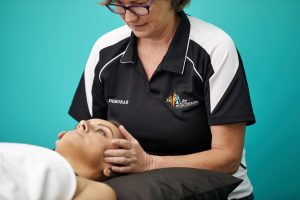8 TOP TIPS
On how to stay Injury-free while training for a marathon or other endurance event
Training for a marathon or other endurance event can be an exciting and fulfilling experience but it also comes with a risk of injury. Studies have shown that up to 90% of runners will experience some form of injury during their training. While some injuries may be inevitable, there are steps you can take to minimise your risk and stay injury-free.
Here are our 8 Top Tips to help you train safely and effectively.
1.Start Slowly and Build Gradually
One of runners’ biggest mistakes is doing too much too soon. It’s important to start slowly and build gradually. This means gradually increasing your distance and intensity over time. A good rule of thumb is to increase your distance by no more than 10% per week. This will allow your body to adapt to the increased demands of training and reduce your risk of injury.
2. Incorporate Strength Training and Cross-Training
Running and other endurance exercise puts a lot of stress on your muscles and joints. Incorporating strength training and cross-training into your routine can help you build muscle, improve your flexibility, and reduce your risk of injury. Strength training exercises should focus on the muscles that are used most during running, such as your quadriceps, hamstrings, calves, and glutes. If you are running, cross-training activities such as swimming, cycling, and yoga can help you improve your fitness while giving your body a break from the repetitive stress of running.
3. Focus on Proper Form and Technique
If you are running in an event, proper running form and technique can help you run more efficiently and reduce your risk of injury. Some tips for proper form include:
- Keeping your shoulders relaxed and your arms at your sides
- Landing on your midfoot or forefoot, rather than your heel
- Maintaining good posture and a slight lean forward
4. Listen to Your Body
One of the most important things you can do to stay injury-free while training for a marathon or other endurance event is to listen to your body. Pay attention to any aches, pains, or discomfort you may be experiencing. If you feel like something isn’t right, take a break and rest. Continuing to train through pain can lead to more serious injuries and set you back in your training.
5. Get Enough Rest and Recovery
Rest and recovery are just as important as training when it comes to staying injury-free. Make sure to get enough sleep and take rest days when needed. Rest and recovery can help your muscles repair and rebuild, reducing your risk of injury and improving your performance.
6. Wear Proper Shoes and Gear
Wearing proper shoes and gear can also help you stay injury-free. Running shoes should provide adequate support and cushioning and should be replaced every 500-750 kilometres. Proper running attire should be comfortable and breathable and should help regulate your body temperature during your workout. Your Podiatrist can review your shoes and ensure you have the proper support required for the endurance activity you are taking on. They can also teach you some handy tips on tying your laces and about your landing form!

7. Stay Hydrated and Fuel Properly
Proper hydration and nutrition are essential for endurance athletes. Make sure to drink plenty of water before, during, and after your workouts. Eating a balanced diet that includes complex carbohydrates, lean protein, and healthy fats can help you fuel your workouts and recover more quickly.
8. Come and See Us, your Trusted Allied Health Provider for Pre- and Post-Event Remedial Massage
Sports massage is a specific type of massage that treats and prevents sports injuries. It works by stretching and stimulating tight muscles and improving the condition of soft tissue. It helps reduce the stress and tension that can build up in the body from exercise or strenuous activities and correct soft tissue muscle imbalances and aids in recovery and prevent injury.
Any injury or condition that can reduce an athlete’s performance has serious effects on their careers on and off the field. Regular sports massage help reduce the risk of injury, and prevention of re – injury. Having massage both before, after trainings and game, helps warming up and loosening the muscles and reducing muscle tone which gives then puts them in a better condition for the athletes chosen sport.
Sports massage isn’t like your remedial massage, sports involve more passive and active stretching, deep tissue and tapotement. Unlike remedial massage which involves more trigger points, MFR (myofascial release).

Your Physiotherapist, Exercise Physiologist and Podiatrist can help you while you are training for your event. If you have any pre-existing injuries, ensure you have these checked before you begin to train.
In conclusion, training for a marathon or other endurance event can be a challenging but rewarding experience. By following these tips, you can help minimise your risk of injury and stay on track to reach your goals. Remember to start slowly, listen to your body, and prioritise rest and recovery. With the right mindset and approach, you can successfully complete your training and achieve your goals. Good luck!!






